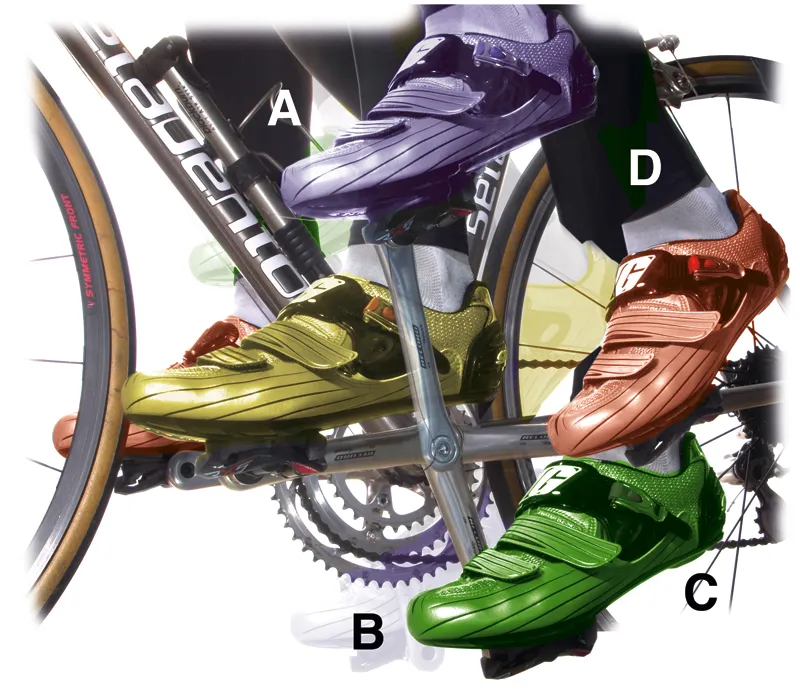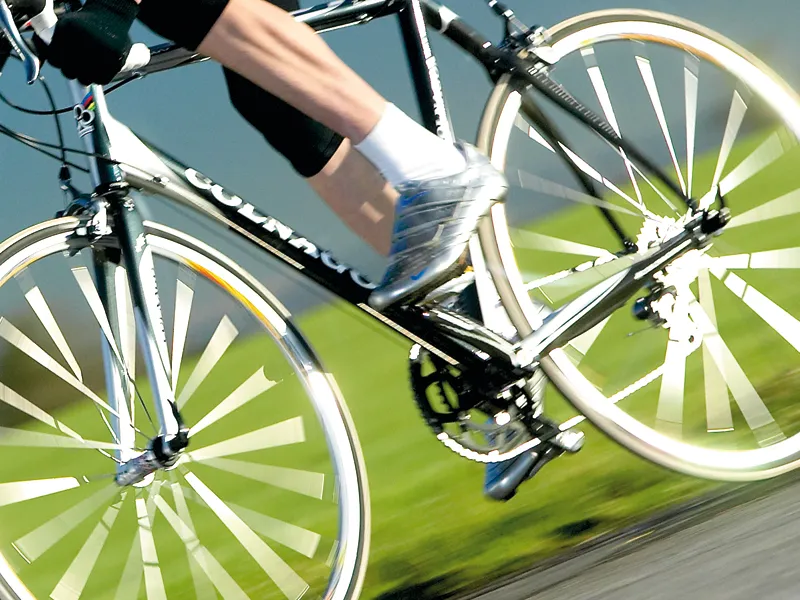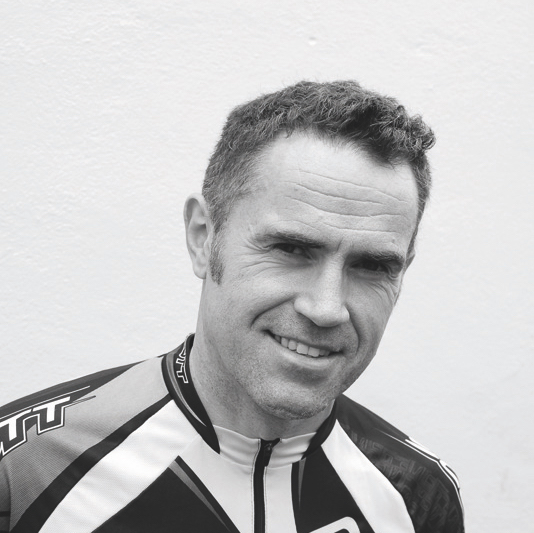A good cyclist looks like poetry in motion. Legs circling in perfect rhythm, a position of power with relaxed high-speed propulsion. Just think Bradley Wiggins. By contrast many beginners or occasional cyclists look inefficient, are in the wrong gear and appear to be progressing painfully.
As the bicycle is a fairly recent mode of transport in our evolution from cavemen to cyclist, you won’t be a natural unless your parents/ grandparents rode regularly.
It takes hours in the saddle to be efficient, so the adage that “practice makes perfect” is quite true in this instance. Neural pathways will be ‘wired’ into your muscle co-ordination patterns – so the more you cycle haphazardly the more ingrained bad pedal mechanics become.
We aren’t all going to be 100rpm Lance Armstrongs, but conversely you do need to think about what you do – not just stomp on the pedals.

Better pedaling
If you are going to try to pedal better you need to know two things: (1) what good pedalling technique is, and (2) how to teach your legs such a technique. Research on pro cyclists has shown that they pedal with a propulsive pressing phase as the pedal passes the horizontal and heads towards the floor. So looking at the bike from the non-crank side, as shown, from about A to B.
However, if you just push, push, push through the ‘A to B phase’ your legs will be only working one way. Because, assuming you have clipless pedals, you have the upward action at the back of the pedal stroke (C to D on the illustration opposite) to consider as well.
Good pedallers have been shown to also pull backwards and very slightly upwards at the back-half of the pedal stroke. From this, two essentials to pedalling become apparent. Firstly, you really need clipless pedals to get effective back and upward pulling (especially uphill out of the saddle), and secondly and most importantly you need to be sitting in the right place to pedal “like a pro”.
Getting the measure
If you don’t already have this, measure your inside leg in centimetres, and multiply this figure by 1.07 to 1.09 to get a ‘zone’ of possible distance between the mid-way along the top of the seat and the pedal when crank is at the furthest point from the saddle. So, at least you can now be in the right place to start pedaling right.
Ineffective pedal action or sitting in the wrong position will often develop into recurring problems with the calf, lower back and shoulder muscles, plus aches at the knee, hip and foot joints. To avoid this the trick you need to master is learning to be both seated right and pedalling smart.
The terrain variations and extremes in speed make for a lot of potential gear and cadence combinations that you need to know. Stick in one gear all the time and you’re in trouble – a fixed wheel is the exception because the constant pedalling builds strength and helps wire in good technique, but even riding fixed has a downside if you over do it or don’t choose your terrain carefully.
Ideally your gear changes allow for effective and efficient mechanical work despite varying demands. But in reality, all too often beginners or poorly trained cyclists suffer from over-spinning (>110rpm), grinding big gears (<60rpm) or simply poor pedal technique. To improve pedal action you will need to change from pure mileage or heart rate orientated sessions to those that train your nervous system and boost experience. For example, in racing if you focus on your technique, especially breathing, and the demands of the road ahead you will beat the cyclists who are suffering from leg discomfort, choosing the wrong gears or failing to change gear ‘on time’.
Technique aides:
1. Try taking some indoor spin classes, or investing in a fixed wheel bike – or at the very least some easier gear flat rides at higher cadences (100rpm+). Learn to relax and press despite approaching two revs per second.
2. On longer climbs try gearing down to a harder gear and climbing out of the saddle with a lower cadence (60-70rpm). Relax your upper body and rock with the bike but keep the sideways rocking under control.
3. Buy a cycle computer or HRM with cadence function and use this to ensure you hit the desired RPM for each part of your session. Start moderate (70-80) in easier gears and increase gearing and cadence after 10-15 minutes. All the time focus on smooth leg action of press, scrape, lift and throw over.
4. On a turbo trainer, close your eyes while you cycle and feel the pedals rotating. You can actually vary where you press and pull to see how it changes your internal pedal ‘feel’.
5. Rollers are one of the best ways to teach relaxed spinning, balance and muscle coordination for cyclists – it’s no coincidence that the best track cyclists tend to ride rollers to warm up, cool down and train.
6. Once you are warmed up, perform one minute cadence intervals that follow a pyramid pattern, such as: 70, 80, 90, 100, 90, 80, 70rpm. Repeat this a total of six times with a minute’s unmonitored riding between. Choose flat or slightly rolling terrain to ensure that the correct cadence is managed.
7. How about trying one leg cycling to improve your pedalling technique?
Disengage one foot when you’re on the bike and place it on the rear axle or on the down tube bottle cage. Start at 30 seconds on each leg followed by one minute with both legs. This can be repeated three to ten times.
To build up your strength, increase the interval time by 30 seconds each week and you should notice a difference.

